Pitch Calling Device: The Best Guide for 2025
Reading Time: 12 minutes
Reading Time: 12 minutes
Pitch calling devices are changing the game in baseball and softball—improving communication, speeding up play, and helping teams perform better.
As more leagues approve this communication system, it’s important to understand how it works. Not all devices are created equal—features can make a big difference.
This guide covers everything you need to know, from key benefits to technical specifications and buying tips, to help you choose the right pitch calling device for your team.
Key Takeaways
- Pitch calling devices improve team communication, speed up play, and help reduce errors by sending clear, instant signals.
- They’re secure and encrypted, protecting your strategy from sign stealing.
- Devices are weather-resistant, easy to read in any light, and built tough for real game conditions.
- Battery life is solid, lasting through doubleheaders without worry.
- Setup and training are easy, and most systems scale to any team size or budget.
- These tools are approved in high school, NCAA, and pro leagues, making them a reliable investment across all levels.
- Compared to traditional methods, pitch calling tech saves time, reduces confusion, and leads to smarter plays.
- Choosing the right system depends on your needs—think team size, budget, and coaching style.
GoRout Diamond is a game-changer that stands out as the most reliable, flexible, and coach-friendly solution on the market. It works without WiFi, delivers fast and clear signals, and is used by top teams.
Get a custom quote or visit the web shop to equip your team for a winning season.
What Is A Pitch Calling Device?

A pitch calling device is a wearable electronic tool that lets a baseball or softball coach send pitch selections and strategies straight to players in real-time.
Most systems let coaches send a pitch or defensive call with the press of a button on an app, instantly transmitting it to the small screens or audio devices players wear.
These gadgets replace old-school hand signs, cut down on confusion, and keep your signals safe from the other team.
You can use them to speed up the game and make pitch calls more accurate. With fewer missed signs, pitchers and catchers can actually focus on the play.
Key components
| Component | What it does |
| Coach transmitter/controller | Lets you send calls from the dugout or bench |
| Player receivers | Players wear these on their wrist, belt, cap, or glove to receive signals, and you can assign specific channels or roles to each receiver for better team coordination |
| Communication technology | Uses encrypted wireless protocols (not WiFi), so signals stay private and safe across the field |
Pro and college teams are all over these devices now, and youth leagues are catching on fast.
What Are The Benefits Of Using a Pitch Calling Device?
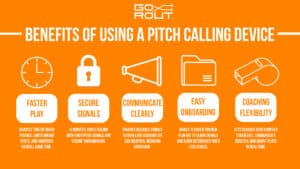
Pitch calling devices make it easier for teams to communicate, react quickly, and keep their signals and signs safe.
Main advantages
| Feature | How It Helps Your Team |
| Faster Play | Reduces time between pitches, limits mound visits, and shortens overall game time. |
| Secure Signals | Eliminates sign stealing with encrypted signals and secure transmission. |
| Clear Communication | Ensures reliable signals even in loud stadiums or bad weather, reducing confusion. |
| Easy Onboarding | Makes it easier for new players to learn signals and align defensively with less stress. |
| Coaching Flexibility | Lets coaches send complex strategies, communicate directly, and adjust plays in real-time. |
Coaches get a competitive edge. You can send complex strategies or change your call on the fly. Thanks to clear signals, players can execute plays more reliably.
Quick, secure, and clear pitch calling means your team will play its best—every time.
“GoRout has been a huge addition to our program! We no longer worry about missing signs, whether it be on defense or offense, and we don’t need to spend any time teaching signs! GoRout’s technology, functionality, and app has been easy to use and consistently accurate. I’d highly recommend GoRout to any program!” – Head Coach Kevin Leighton, Fordham University Baseball
What Are The Key Features Of a Pitch Calling Device?
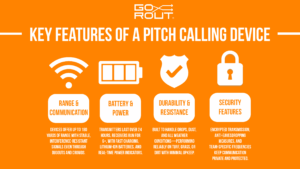
Pitch calling devices use secure tech and solid hardware to give you fast, private, and clear communication on the field.
You’ll find audio or display receivers, fully encrypted channels, and apps for easy control.
Battery life is long, and these devices are built for real games, not just showrooms.
Key features at a glance
| Category | Key Features |
| Range & Communication | Devices offer up to 180 yards of range with stable, interference-resistant signals even through dugouts and crowds. |
| Battery & Power | Transmitters last over 24 hours, receivers run for 6+, with fast charging, lithium-ion batteries, and real-time power indicators. |
| Durability & Resistance | Built to handle drops, dust, and all weather conditions—performing reliably on turf, grass, or dirt with minimal upkeep. |
| Security Features | Encrypted transmission, anti-eavesdropping measures, and team-specific frequencies keep communication private and protected. |
These features put pitch calling devices at the top for teams that want easy, safe, and steady coach-to-player communication all season.
How Pitch Calling Devices Compare With Traditional Methods
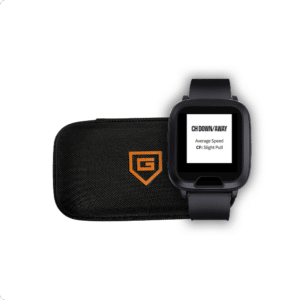
Modern pitch calling devices outpace old hand signals and paper wristbands. The whole team stays in sync, and you don’t waste time sorting out confusion when the game’s on the line.
| Feature | Traditional Methods | Modern Pitch Calling Devices |
| Time Efficiency | Slower pace with frequent mound visits | Faster pitch selection, fewer stoppages, and quicker overall gameplay |
| Pitch Selection | Relies on hand signals that can be missed or misread | Digital signals are delivered instantly and privately |
| Mound Visits | Often needed to clarify signs or fix miscommunication | Rarely necessary thanks to clear, direct communication |
| Learning Curve | Requires memorization and repetition to master | Simple training with less memorization needed |
| Total Game Time | Leads to longer games due to delays and confusion | Helps shorten games by streamlining decision-making |
| Security | High risk of sign stealing; frequent sign changes required | Encrypted signals greatly reduce risk, though minor tech vulnerabilities may exist |
| Weather/Conditions | Signals can be hard to see in rain, glare, or under pressure | Performs reliably in all weather with high screen visibility |
| Player Experience | Players may feel pressure to memorize signs and stay alert for subtle cues | Reduces mental load and helps players focus on execution |
| Cost-Benefit | Low initial cost, but higher risk of mistakes and more time lost | Higher upfront cost, but saves time and boosts performance long term |
Players say that electronic pitch-calling systems help them focus and make communication with their coaches easier. Coaches like how these tools let them adjust defensive plays or positions without any fuss.
“We used GoRout to call pitches, defensive plays, pickoffs and offensive plays. Our players did not miss a sign this season and we did not have to worry that the other team was stealing our signs.” – Coach Brooks Kerr, Calvert Hall College High School Baseball
How To Choose The Right Pitch Calling Device
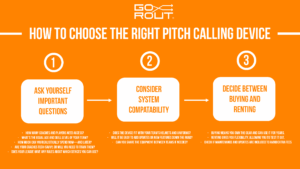
Choosing a pitch calling device for your team starts with your own unique needs.
Think about what you want out of this investment. It’s not just about price—it’s about what will actually help you on the field.
Ask yourself these questions when deciding
- How many coaches and players need access?
- What’s the usual age and skill level of your team?
- How much can you realistically spend now—and later?
- Are your coaches tech-savvy, or will you need to train them?
- Does your league have any rules about which devices you can use?
Consider system compatibility
- Does the device fit with your team’s helmets and uniforms?
- Will it be easy to add updates or new features down the road?
- Can you share the equipment between teams if needed?
Decide between buying and renting
- Buying means you own the gear and can use it for years.
- Renting gives you flexibility, allowing you to test it out or use it for just one season.
- Check if maintenance and updates are included, or you might get hit with extra fees.
How To Implement A Pitch Calling Device
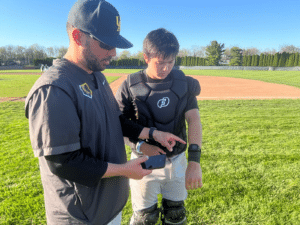
Add these wearable devices to your team’s routine and speed up communication and safety, keeping your team on the same page. Here’s how to get started, practice, and use it when it matters most.
Initial setup and configuration
Get your pitch calling kit out of the box. You should see these items inside.
| Component | Included |
| Coach transmitter unit | ✓ |
| Player receiver units | (Quantity) |
| Charging cables & base | ✓ |
| Storage case | ✓ |
| Quick-start guide | ✓ |
| Optional accessories | (If any) |
Plug in the charging base and hook up all the devices. Check if the charging lights come on—sometimes they don’t, and it’s an easy fix.
Let everything charge for three hours the first time. Once charged, turn on the transmitter and each receiver.
Test the system by sending signals across the field. If each receiver vibrates or lights up, you’re good to go. If not, double-check the setup.
Team training protocol
Get comfortable with the system yourself first. Play around with the transmitter—try out signals, set your go-to calls as presets and tweak until it feels right.
Show your players how to wear the watch receivers and what to look for when a message comes in. Let them ask questions and run through a few practice rounds until it feels natural.
Practicing with pitch calling devices in your sport helps teams adapt to the technology and improve overall performance during games.
Work the devices into your drills. Start slow with static signals, then ramp up to live, fast-paced practice. It’s a good idea to mix in game-like situations so everyone can react on the fly.
Gameday implementation
Before the game starts, check the batteries and prepare all devices. During play, keep an eye on battery levels, and be ready to replace them if needed.
After the game, simply return the devices to their case and plug them in to charge. This way, you won’t be scrambling before your next practice.
How GoRout Diamond Improves Your Team’s Performance
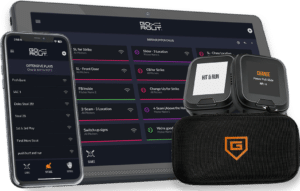
GoRout Diamond is a wireless pitch-calling system that changes the way baseball and softball teams communicate and perform. Using a reliable cellular network, it delivers fast and secure signals without relying on Wi-Fi.
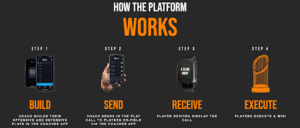
For coaches
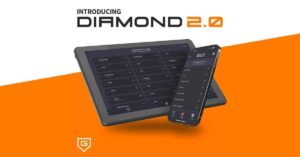
With GoRout’s web and mobile app, coaches can create and send pitch calls, defensive shifts, and strategic plays instantly—no hand signs, no mound visits.
It means faster decisions, less delays, and more game control. You can make real-time adjustments and implement advanced strategies on the fly.
For players
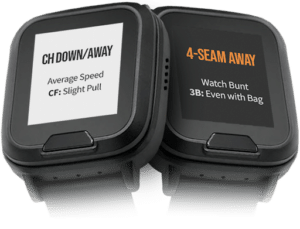
Players wear lightweight digital wristbands with bright, high-visibility screens that display position-specific instructions.
It eliminates confusion, reduces mental load, and helps players stay locked in and react quickly during key moments.
How it boosts performance
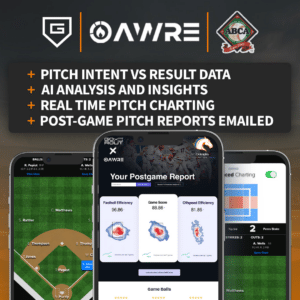
- Real-time communication keeps everyone in sync and reduces play-to-play delays
- Instant play adjustments reduce errors and improve defensive execution
- Encrypted transmissions prevent sign stealing and give your team a strategic advantage
- Weather-resistant wristbands effectively handle heat, rain or even a surprise snowstorm
- AI-powered pitch tracking helps coaches analyze pitch intent vs. results, real-time pitch charting, and game patterns to improve decisions
- 12+ hour battery life ensures communication never breaks down mid-game
- Customizable packages let you pick as many devices as you need for your program
Many teams have turned to GoRout Diamond to boost communication and get a competitive edge. Check out all case studies and testimonials to learn more about their success.
GoRout’s pitch calling devices are approved for NCAA and high school sports, so you can use them at multiple levels.
Better communication leads to faster plays, sharper focus, and higher game IQ.
Get a quote or visit the online shop.
What Are Regulatory Compliance Requirements By League

If you’re planning to use a pitch calling device in 2025, you’ll need to follow your league’s rules.
The use of such devices is only permitted in certain leagues or situations, depending on the specific regulations in place.
Each level—MLB, college, high school, and youth—has its standards for what’s allowed and how to use it.
MLB regulations
MLB now lets teams use electronic pitch-calling devices, but only if they’re MLB-approved.
Devices are only for pitchers, catchers, and certain fielders – no two-way communication or use by hitters. Teams must follow security protocols to prevent sign stealing.
For more, see MLB’s move to wearable pitch-calling devices.
NCAA guidelines
In college baseball, rules about electronic communication can change by conference.
Most divisions want you to get approval before using any device. You’ll have to show your device meets safety and fairness standards. Some conferences ask for paperwork before the season.
Always check with your athletic department for the latest updates.
Check out NCAA publications for more information.
High School Federation rules
NFHS allows one-way electronic communication from coach to catcher only—not to other players.
Requirements vary by state. Some states allow only certain brands or require written approval.
If your device gets rejected, you can appeal and explain its safety and compliance.
Youth League considerations
Little League baseball and softball now let coaches use one-way electronic devices to call pitches to the catcher.
Communication with other players or on offense isn’t allowed.
Parents should make sure teams follow league standards for fairness and child safety.
Teams are encouraged to review the youth rule changes before the season starts.
Troubleshooting Common Issues With Pitch Calling Devices
If your pitch calling device isn’t working right, quick fixes can usually solve the problem.
For signal interference, check for nearby wireless equipment or crowded channels—try changing frequencies or moving the device to a higher, more open spot.
Battery issues? Use fast chargers during breaks, lower screen brightness, and always have backups ready.
If players are unsure about the tech, offer short training sessions and let them practice during drills.
For weather-related problems, use water-resistant covers and don’t expose devices to extreme heat or cold.
Most modern devices are built to withstand tough conditions.
If issues persist or you don’t hear back from customer service, contact the company directly for troubleshooting or replacement support.
Pitch Calling Device Cost Considerations & ROI
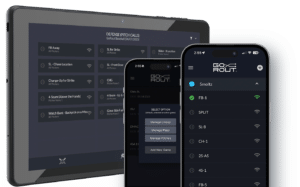
Thinking about pitch calling devices for your team this year? Consider the upfront cost, long-term value, and how they compare to old-school hand signs.
Most systems range from $400 to $2,000, depending on the features, and extra receivers are $100 to $200 each.
Accessories, such as chargers and cases, are sold separately.
Over time, these devices can save 10-15 minutes per game by speeding up communication and reducing confusion.
They also cut down on sign stealing and help players learn signals faster, saving practice time.
Many schools manage costs by spreading payments over multiple seasons, sharing gear with other teams, or fundraising through grants and donations.
Hand signs seem cheaper, but digital systems reduce errors and increase team efficiency.
“GoRout has evolved into a must have product for any Baseball team at any level. They have inquired about and implemented several improvements to the software as our game has moved into the era of technology. The updated grid interface has made a significant positive impact on our ability to navigate the system for its intended purposes. From color coding signs, adding hot list of signals, position specific defensive alignment, to fully customizable text signals; Having GoRout is the ultimate weapon for anyone that has it. The team at GoRout has worked closely with our Coaching Staff to ensure a quality experience as well as an effective format as our game continues to advance every year.” – Assistant Coach Brian Del Rosso, Keystone College Baseball
Final Thoughts About Pitch Calling Devices
Pitch calling devices bring speed, clarity, and security to your team’s communication. You don’t need WiFi—modern systems use cellular networks to deliver signals instantly right on the field.
Visibility is strong, even in bright sunlight or under stadium lights. Adjustable screens and display modes mean your players can always read your pitch calls, no matter the weather.
Advanced devices, like GoRout Diamond, handle heat, rain, and even snow without missing a beat. It’s approved by the NCAA and comes with special in-game features just for your team’s needs.
You can start with just one device and then add more units as your team grows. Packages are flexible, so you purchase only what you need for your roster size and budget.
Pitch calling technology is reshaping how teams compete, and leading brands like GoRout Diamond make it easy to upgrade your strategy.
If you want to see how your team can benefit, now’s a good time to check your options and get a custom quote.
FAQs About Pitch Calling Devices
What is a pitch call device?
A pitch call device is a wearable electronic tool that lets coaches send signals to players—usually the catcher or pitcher—during a game. These gadgets use secure wireless tech to cut down on confusion and speed up communication.
What is a pitch call?
A pitch call is just an instruction about what pitch to throw, where to throw it, or a defensive play. Coaches usually send these to the catcher, and sometimes the pitcher, so teams can act fast and stick to their plan.
What is a pitcher device?
A pitcher device is usually a wearable receiver—think a wristwatch—that shows pitch calls from a coach or catcher. Pitchers can check these instantly and know what’s coming, so there’s way less chance of mixed signals.
What is the app that calls pitches?
Pitch calling apps let coaches pick pitches and send them wirelessly to players out on the field. GoRout’s app is an example approved for use in college and pro games.
What features make pitch calling devices faster and more reliable than traditional signals?
The system offers real-time encrypted communication, high-contrast displays for clear viewing, durability for all weather conditions, and one-tap operation for instant play calls.
What encryption methods keep electronic pitch calls private and secure?
These devices use end-to-end encryption and their own wireless channels so that nobody can intercept or decode the calls. Encrypted signals keep signs private and protect team strategy.
Why are encrypted wireless transmissions more reliable than WiFi or Bluetooth for sports tech?
Encrypted wireless networks don’t drop connections as much as WiFi or Bluetooth. They work in stadiums and out in the sticks, and you don’t have to worry about internet coverage. That’s a huge plus for keeping things quick and secure.
What design features make electronic pitch calling devices more resilient under game pressure?
Pitch calling devices come with impact-resistant cases, water resistance, and long battery life, so they can handle doubleheaders and bad weather. They’re tested for fast movement and rough play, so you can count on them year after year.



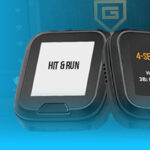
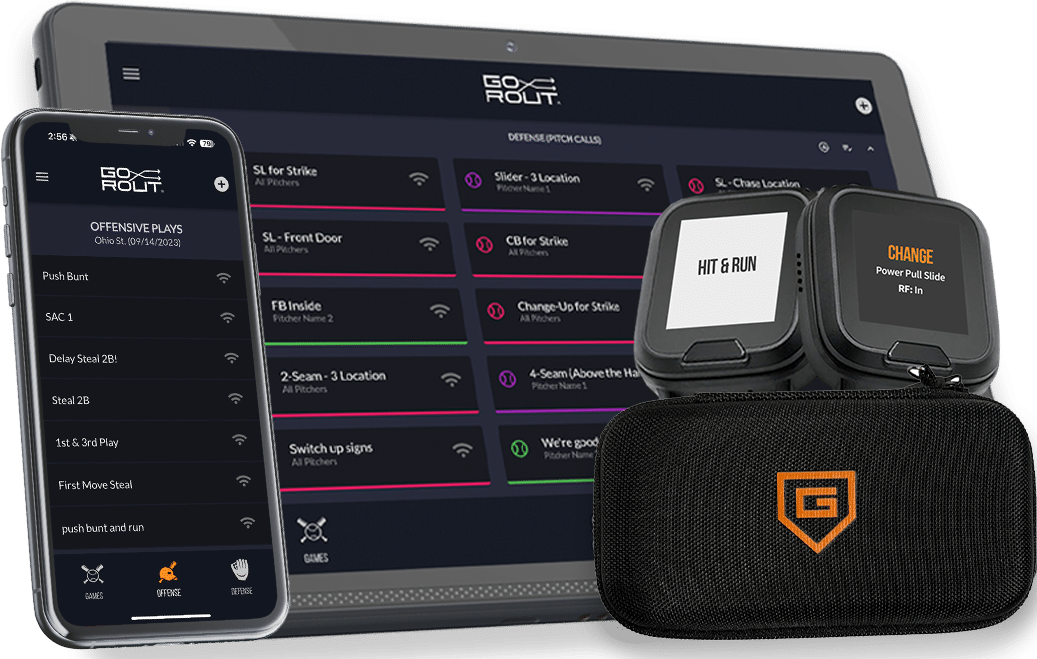
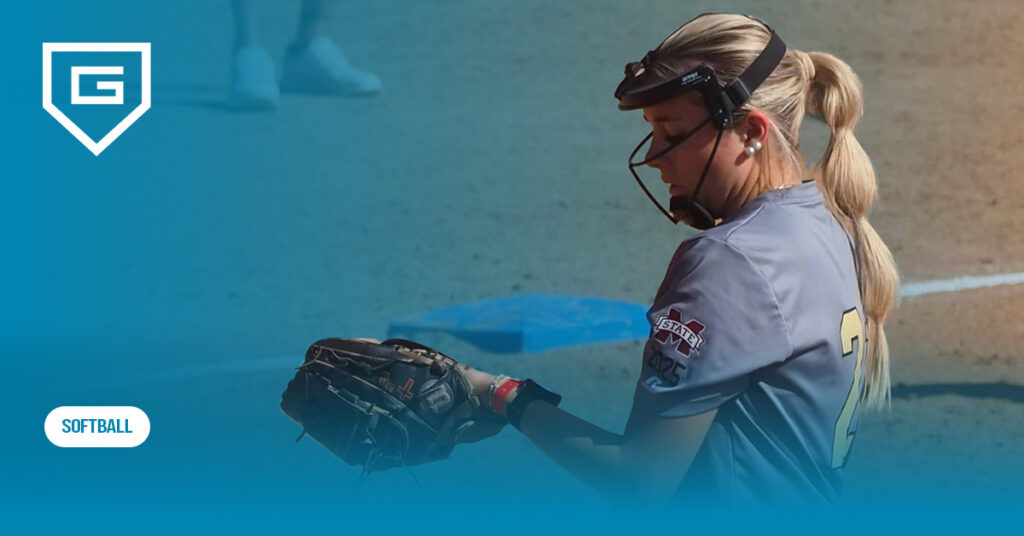
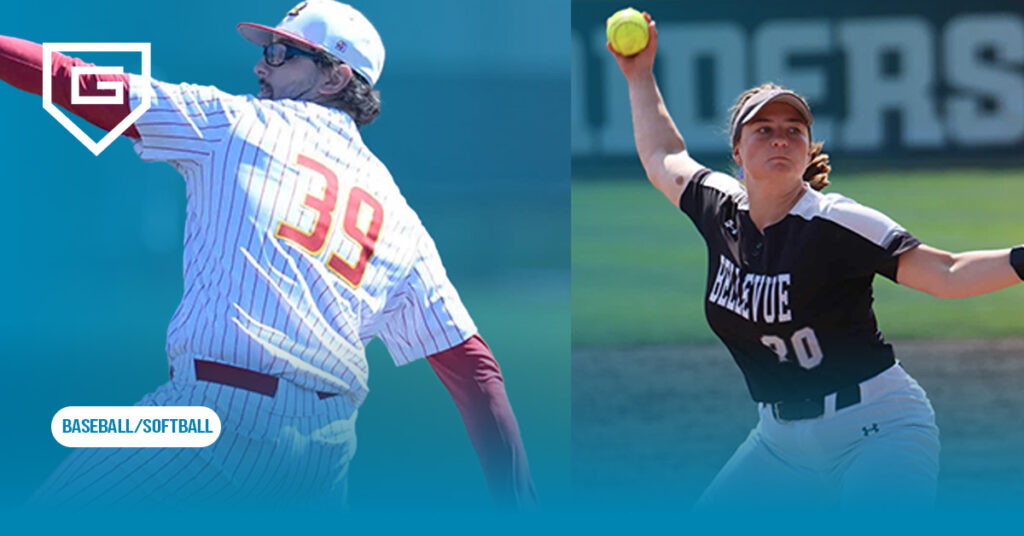
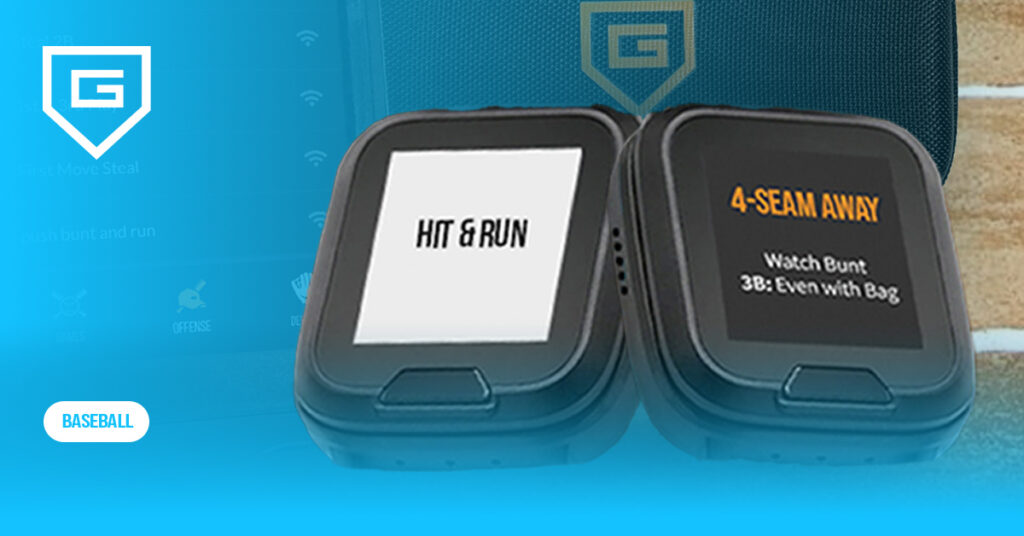
Can the radio signal be hacked or jammed?
Our devices are securely encrypted to your organization specifically. So even if your opponents use GoRout devices, there is no way for your signals to be intercepted!